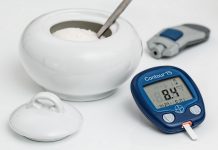
I think you skipped over the part of my question that mentioned that for some meals in the month of meals five, some exchanges might have been substituted for others. It’s right at the beginning of the book. How can I work with these meals given that a choice of exchanges are given, but not all lunch menus have the same exchanges?
For example, there’s a dinner with hummus. I like the hummus, but I know there must be grains to provide a complete protein. So how can I calculate the carbohydrate and protein part of the whole meal when I can’t know from variable exchanges listed for dinners the exact exchanges. I suspect that this portion of their 1500 calorie menu may contain more protein and I need to adjust the portions. How can I verify I need to do that and how can I do that?
Sometimes it’s OK to move exchanges between meals on the same day as long as you don’t exceed the total number of exchanges for the day. Remember to eat carbohydrate around the peak times for injected insulin.
The calories are similar for one starch or one meat exchange used in place of the milk exchange however starch and meat are not good sources of calcium. Also, one starch has the same calories and carbohydrate as a fruit exchange. The explanation in the front of the book was done so that the user could understand the flexibility of using the pre-planned vegetarian menus. Diabetic menus are planned for a whole day, not just a single meal. Individual meals can vary, especially if one is using carbohydrate counting which most people with diabetes use instead of the exchange list.
You can calculate the carbohydrate and protein content of a meal by referring to your exchange booklet and your question below. Protein content is 7 grams in one meat or meat substitute (1 ounce), 8 grams in one milk, 0 – 3 grams in one starch and 2 grams in one vegetable.
If you eat hummus, you don’t need to combine it with a grain at the same meal to get a complete protein. Eat a grain the same day as the hummus. If the lunch meal plan has 1 meat substitute (7 grams protein), 3 starch servings (3 grams times 3 servings = 9 grams) and 2 vegetable servings (2 grams times 2 servings = 4 grams), the total lunch has 20 grams of protein. If you need to reduce the protein content at any meal, eliminate a starch and substitute a fruit which has no protein and you will reduce the protein content by 3 grams while keeping the same number of carbohydrates and calories.
You may want to refer back to your exchange booklet that lists foods in each exchange and the amount of food per serving. If you still need some help making some of these substitutions, see a registered dietitian to individualize your needs and introduce you to carbohydrate counting.



